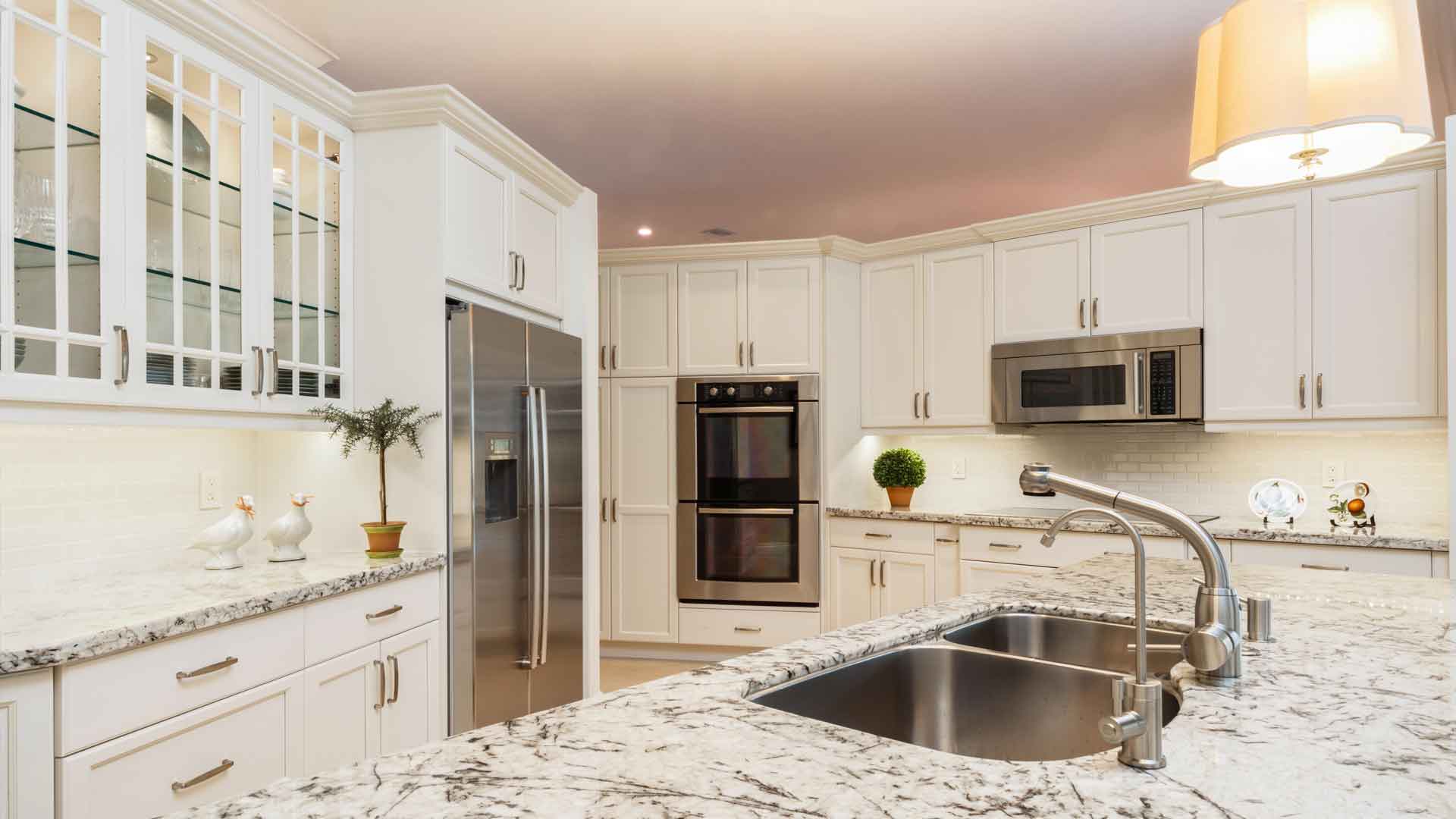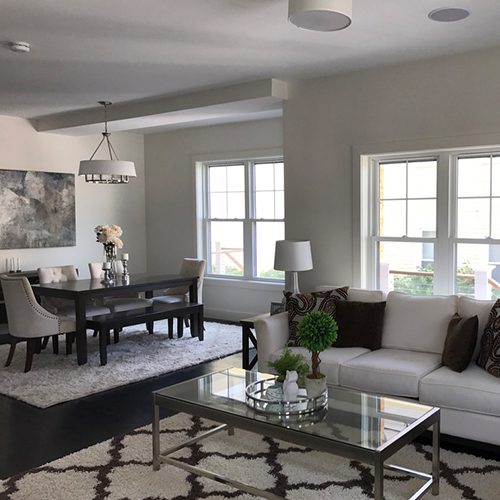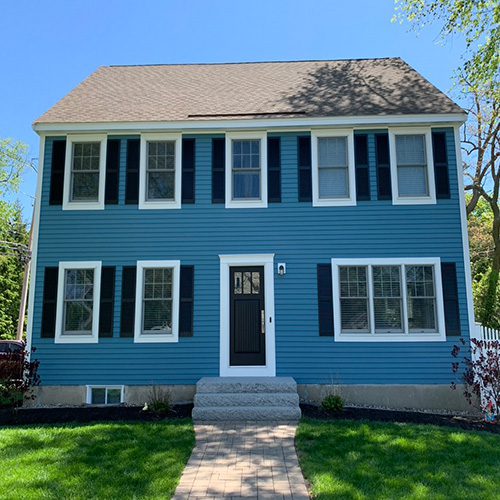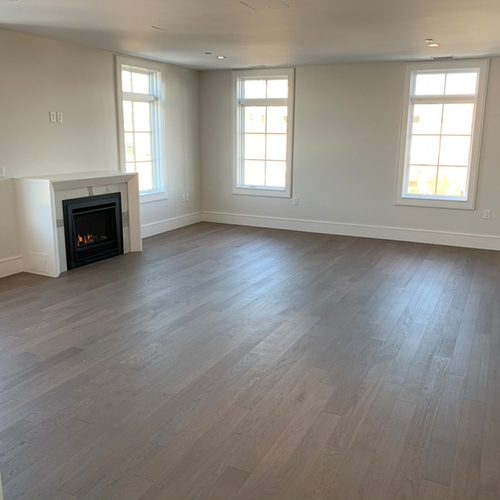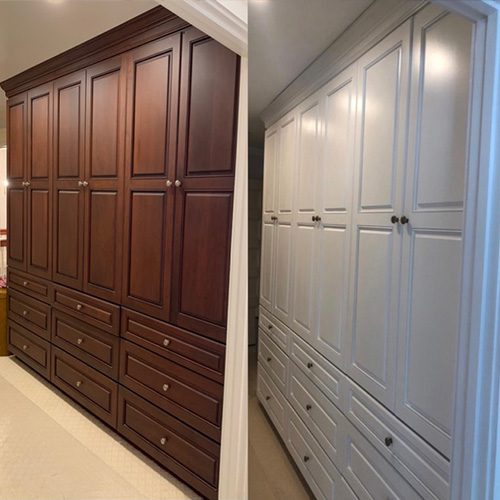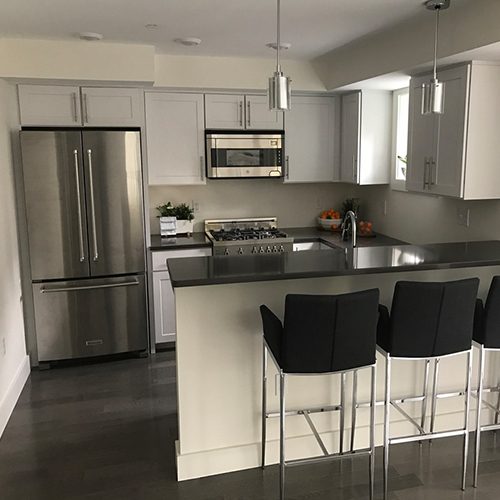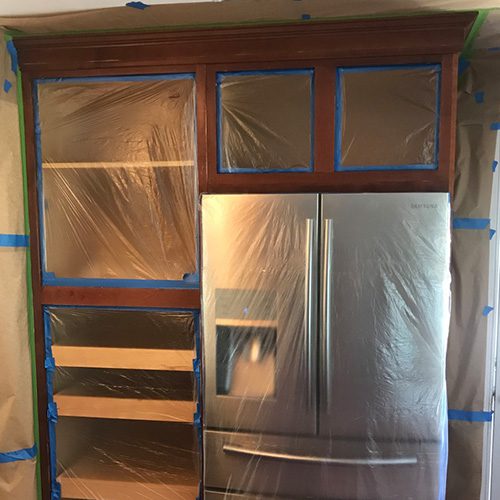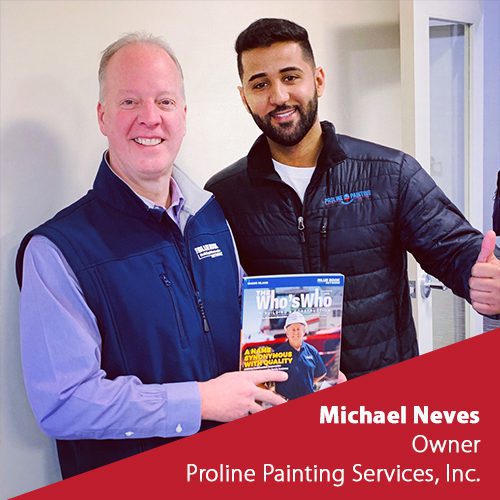Kitchen Cabinet Refinishing
South End MA
Looking for Kitchen Cabinet Refinishing Services in South End, Massachusetts?
Are you a Homeowner? Business Owner? Property Manager? Or maybe someone just looking for more information on the best South End MA kitchen cabinet refinishing services?
You’re in the right place…
DO YOU HAVE THESE PROBLEMS:
- Replacing kitchen cabinets too expensive
- Time for a color change?
- New Home Or Apartment?
Proline Painting Services, a top-rated painter specializing in kitchen cabinet refinishing, has helped thousands of South End homeowners, business owners, property managers, and other individuals in the Greater Boston, MA area. After some research, we’re confident you’ll find us to be the right kitchen cabinet refinishing team to handle your kitchen cabinet refinishing project.
Why Choose
Proline Painting Services Is The Best Kitchen Cabinet Refinishing Services in South End MA?
In short…Because we have a reputation for quality work and being budget friendly. Our customer service is second to none. Our team is always responsive, courteous, friendly, and respectful.
At Proline Painting Services, we do it all! From conception to completion, we handle every aspect of your painting or restoraton project. This integrated approach reduces project time and money by streamlining each phase of implementation and eliminating the delays that often plague sub-contracted projects.
With Proline Painting Services, you’ll receive:
- Quality workmanship that is guaranteed to last
- Work from licensed professionals who are honest and hardworking
- Dependable service that is completed on time and on budget
- Free estimates and a fully insured crew
To review the creativity of our work and the quality of our craftsmanship, simply take a look at our Photo Gallery. Our decades worth of painting projects speak for themselves! From custom commercial projects to house painting, and more — You can trust your project or business property to our team of experts.
Residential & Commercial
Full Service Painting Company
Interior House Painter
South End MA
Click Here
Exterior House Painter
South End MA
Click Here
South End
Painting Contractor
Click Here
Benefits of Repainting Your Kitchen Cabinets
When your cabinets start to look old or outdated, they can bring down the value of your home. They can also make your kitchen feel unwelcoming or dirty. Kitchen cabinet repainting comes with many benefits, including:
- Avoiding the dust and noise that comes with cabinet installation
- No demolition
- Saving money
- Quicker results than replacement
- No need to relevel or redo your plumbing
- Keeping your kitchen in service
If you have old but still usable cabinets, you may want to save them. Often, older cabinets are of better quality than more recent ones. You can bring your current cabinets back to life with kitchen cabinet finishing.
Are you improving your home before you put it on the market? If so, you need to choose your home improvements wisely, so you don’t lose money.
Replace Your Cabinets or Refinish Them?
While replacing your cabinets is the more expensive choice, it may be necessary. When you wonder whether to replace or refinish, consider:
- Functionality. If the location of your cabinets doesn’t work for you, it may be time to replace them.
- Time. Installing a new kitchen can take months, while repainting may only take a week. Think about how long you are willing and able to live without your kitchen.
- Repair. If you have damaged cabinets, you can typically opt for repair. However, extensive damage may make replacement the cheaper option.
The kitchen cabinet refinishing cost is worth it if you like the current layout of your kitchen or bathroom. You can always reface your cabinetry and add other functional accessories. If you need advice on the best option for your space, call Proline Painting today.
What Makes Us Different?
FULLY INSURED
We’re fully insured and bonded to handle all requests.
budget Friendly
We're willing to discuss projects constrained by a budget.
Quick Service
We show up on time and finish ahead of schedule regularly.
Friendly Team
Our crew is pleasant and easy to talk to on the job site.
Steps to Refinishing Cabinets
The steps to cabinet refinishing can vary, and so can the amount of time it takes to complete the job. When you look for “kitchen cabinet refinishing near me” expect us to:
- Clean all surfaces thoroughly
- Spread cloths on countertops and floors
- Find the correct solution to strip your cabinets
- Use a wood filler to repair holes and then sand the area
- Paint the wood your desired color and apply the stain and varnish
Sometimes you will want to disassemble your cabinets before you begin. When you do, label the parts to make sure you put them back in the right place. If you can, do your painting outside or somewhere with proper ventilation.
Stripping the cabinets may take trial and error if you do not know the current finish. Some common finishes include:
- Shellac
- Lacquer
- Polyurethane
- Water-based
- Latex- or oil-based paint
Our team completes the steps of kitchen cabinet refinishing efficiently and expertly. Call us today for a free estimate and ask us how we can upgrade your kitchen.
How to Refinish Cabinets with Paint
Once you choose a paint color, we come in and do your kitchen or bathroom cabinet refinishing onsite. We use high-quality materials, so our results are:
- Durable
- Long-lasting
- Washable
The kitchen is a busy area in the house. Therefore, cabinets need paint that wears well. Drips from your sink, steam from a dishwasher, and heat from the stovetop can all affect your paint’s finish.
Depending on the surface and your preference, we apply the paint using a spraying method or a traditional brush. Spraying provides a smooth, sleek appearance. If you aren’t sure which method you want, our skilled painters will show you samples of both.
You should always do refinishing work in dry conditions. If you do not have an air-conditioned area, consider scheduling your kitchen cabinet finishing in the winter. Call us for cabinet painting at any time of year.
Talk to an Expert
We understand that sometimes you just want to talk before scheduling a consultation. Our team will gladly answer any of your questions or help you with any of your concerns.
Call Mike now! — (617) 818-5763
Testimonials From Happy Customers
★★★★★
Top-Rated Painters
Focused On Quality Craftsmanship And Customer Service
Request A Virtual Estimate Today!
We’d be happy to evaluate your cabinet project, discuss your needs, and provide you with a competitive estimate without setting foot in your home, unless absolutely necessary.
Interior House Painter
South End MA
Click Here
Exterior House Painter
South End MA
Click Here
South End
Painting Contractor
Click Here
MAP OF South End, MA
[rkfrt-map title=”Map of South End” location=”South End, MA” zoom=”13″ neighborhood=”true” activities=”true”]
South End OVERVIEW
|
|
This article has multiple issues. Please help improve it or discuss these issues on the talk page. (Learn how and when to remove these template messages)
|
|
South End District
|
|
|
U.S. National Register of Historic Places
|
|
  |
|
  Location in Boston
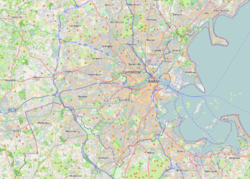  Location in Boston metro area
  Location in Massachusetts
  Location in United States
|
|
| Location | Boston, Massachusetts |
|---|---|
| Architect | Multiple |
| Architectural style | Greek Revival, Late Victorian, Italianate |
| Website | www |
| NRHP reference No. | 73000324 |
| Added to NRHP | May 8, 1973 |
The South End is a neighborhood of Boston, Massachusetts. It is bordered by Back Bay, Chinatown, and Roxbury. It is distinguished from other neighborhoods by its Victorian style houses and the many parks in and around the area. The South End is the largest intact Victorian row house district in the country, as it is made up of over 300 acres. Eleven residential parks are contained within the South End. In 1973, the South End was listed in the National Register of Historic Places. Much of the South End was originally marshlands in Boston’s South Bay. After being filled in, construction of the neighborhood began in 1849.
It is home to many diverse groups, including immigrants, young families, and professionals, and it is very popular with the gay and lesbian community of Boston. Since the 1880s the South End has been characterized by its diversity, with substantial Irish, Jewish, African-American, Puerto Rican (in the San Juan Street area), Chinese, and Greek populations. In 2010, the population was 55.2% white, 13.3% Hispanic, 12.5% Black or African American, 16.2% Asian, and 2.7% other; 55.2% of its residents had a bachelor’s degree or higher; the median household income was $57,699; the median age was 36; 65.6% were primarily English speakers; and 12.9% were primarily Spanish speakers.
The South End has five primary and secondary schools that offer education from kindergarten to grade 12.[citation needed]
ABOUT South End, MA
History
Residential history
As the South End geographically grew from filling in land north and west of “the Neck”, the city of Boston envisioned a large inner city residential neighborhood to relieve the crowded downtown and Beacon Hill neighborhoods. The city also hoped for a large and stable tax base. Architect Charles Bulfinch laid out some of the first filled land. He designed a large residential park called Columbia Square located at the present Franklin and Blackstone Squares. Bulfinch’s plan was to route traffic around the square, not through it. Eventually his plan was abandoned and Washington street was allowed to once more divide the square creating today’s separate squares.
Many rooming houses on the Back Bay side of the South End had no bathing facilities; roomers went to public showers to bathe. Filled land in the South End was originally eight feet above sea level, but is now four feet, as fill settles. The original shore line of Boston Neck crosses in front of 40 St. George Street, and tapers to the narrowest point on the Neck at Dover Street. Blackstone and Franklin Square are solid land on the original neck, but clam and snail shells are just beneath its surface, as high seas would occasionally overrun the Neck. Massive granite blocks of original sea wall can be seen on the Harrison Avenue side of the Joshua Bates School.[citation needed]
A burgeoning middle class moved to the South End including business owners, two mayors, bankers, and industrialists. Though the neighborhood’s status as a wealthy neighborhood was relatively short-lived, myths of a dramatic white flight in the 1880s are not entirely true. A series of national financial panics (see e.g., Panic of 1884, Economic history of the United States), combined with the emergence of new residential housing in Back Bay and Roxbury fed a steady decline of whites of English Protestant ancestry. Whites remained in the neighborhood, but increasingly they were Irish Catholic and recent immigrants.[citation needed]
By the close of the nineteenth century the South End was becoming a tenement district, first attracting new immigrants and, in the 1940s, single gay men. The South End also became a center of black middle class Boston life and culture. The largest concentration of Pullman Porters in the country lived in the South End, mostly between Columbus Avenue and the railroad bed. As the decades progressed, more buildings became tenements and by the 1960s absentee landlordism was rampant and the neighborhood was one of the poorest of the city.[citation needed]
The first settlement houses in Boston were in the South End: the South End House, Haley House, Lincoln House, the Harriet Tubman House, and the Children’s Art Centre. In 1960 these settlement houses merged to form United South End Settlements.
Urban renewal
The South End was one of many large-scale landfill projects in Boston to create new residential districts. Construction started in 1849, it was built on tidal marshes that surrounded Boston Neck. The street plan for the South End was to pattern the 18th-century English models, it would have blocks of townhouses overlook small parks in the centers of the residential streets. The parks were built to make the South End more beautiful and make it feel like a community. These townhouses quickly became the predominant form of housing, builders produced blocks of houses for the middle-class families. From 1850 to 1880, these townhouses started to get built, with the typical townhouse having a mix of architectural styles. The South End also became a popular hospital district with the first being the Boston City Hospital which attracted other hospitals to the area. One of the hospitals that came into the South End was the Massachusetts Homeopathic Hospital that was built in 1875. It used fresh air cures and home remedies to heal their patients but if one of the patients needed surgery they were sent to the Boston University School of Medicine. The Boston University School of Medicine first came into the South End in 1874 accompanied by the New England Female College, which was the first college in the region that accepted women. By the late 19th century the South End was becoming increasingly populated by African Americans who were coming from the South. Even though City Hospital admitted black patients, they didn’t allow them into their training programs or hire black professionals. By 1908 a black physician from Alabama named Dr. Cornelius Garland opened his own hospital called Plymouth Hospital and the Nurse’s Training School. By 1929, Plymouth Hospital closed down because City Hospital started to accept people of color into their medical and nursing programs.
The connection of Boston and Albany, New York by railroad (by some of the various companies that would later merge into the Boston and Albany Railroad) was celebrated in 1841 as a way to keep Boston competitive with New York City as an Atlantic port. Just south of the Boston and Worcester Railroad (where the Massachusetts Turnpike is now) in the next decade arose the New York Streets district, a residential area of the South End where the streets were named after cities on the route to Albany. Albany Street still exists (though it now ends at the Turnpike rather than Kneeland); connecting Albany Street with Harrison Street from north to south were Seneca, Oneida, Oswego, Genesee, Rochester and Troy Streets (Troy became the modern Traveler Street).
THINGS NEAR BY South End
[rkfrt-activities title=”South End, Massachusetts” location=”South End,MA” limit=”9″ sort=”asc”]


